Each gardener engaged in the landscaping and decoration of his household plot will certainly think about creating bright and beautiful flower beds. To date, there is simply a huge number of different types and varieties of flowering plants, both perennial and annuals. Whatever flower flower chosen for his flower beds or flower bed, a rose will be present among them, because this plant is rightfully considered to be a queen of flowers.
The modern range of roses pleases the eyes of the unexpected color and form, so anyone can pick up a rose for himself. Rose plethomous harlequin has been particularly popular in recent years - bright and very colorful rose with two-color flowering of petals, which can change. Landing and care for such a variety of blooming plants are quite clear and should not cause difficulties.
In the proposed article, let us consider a botanical description and features of the roses of the harlequin variety, as well as note the basic use of the flower in the design of the site. We give important rules and nuances of agricultural machinery growing roses Harlequin in the open soil.
Rosa Harlequin - Botanical Description and Features
Garden or Park Roza Rosa Harlequin has long been loved by all flowers and landscape designers, since even one bush of such a flower is able to decorate any plot and any flower, filling everything around the wonderful aroma. This rose grade is beneficial to allocate enough of their fellow unusual coloring petals - two-color, which can change. All of these components in aggregate with unpretentiousness in care and frost resistance make Rosa Harlequin a very decorative flower, a welcome guest on any flowerbed.
Rosa Harlequin is a large-flowered plenty rose, which is considered a climber. This group of roses is distinguished by removable flowering, as well as long reprehensive shoots that can reach a height of 3 meters. In addition, in contrast to the real plenty roses of Ramblerians, climbers have closer and tough. This sort of roses received its unusual name for one amazing feature - terry inflorescences have a fairly extraordinary appearance and can change their painting. It was for this this rose called Harlequin or Harlequin. In addition, for a high decorative value due to the bright appearance, the Rose of this variety is often called the decor of Harlequin.
This rose variety was removed in 1986 in Germany in the most famous selection firm and the removal of new varieties of roses - Cordes. This is the most famous and successful gardening company that owns one family with the surname of the same name. This amazing and bright flower was brought by the third generation of this famous family. Today, you can buy the highest-quality saplings of Rosa Rosa Roels in horticultural stores that procure in Germany, for example, in the Kordes or Tantau horticultural firm.
Description Rose Arlequin:
- Rosa Harlequin is a tall, plenty and widespread variety of a popular blooming plant, which since 1986, the time of its opening, has fallen in love with many gardeners and designers.
- The bush rose is tall, is formed sufficiently dense and thick stems, which are very well branched, due to which the plant crepts greatly in diameter and can quickly float the entire garden. In the diameter, the rose rose roses can an average to reach 1.5-2 meters. Therefore, experimental gardeners recommend every year to carry out a strong forming trimming, so that the bustice is compact and neat.
- Rose Rose Harlequin can be in different shape. Optionally, you can get a bush rose or a vacuum, it all depends on trimming.
- In height, this amazing plant can grow up to 3-3.5 m, while shooting can begin to clone down. Therefore, it is important to provide a plant with support when achieving such sizes.
- The stalks that form the bustard of the plenty rose rose harlequin have a greenish tint, and small spikes grow on their surface.
- All shoots are thickly covered with a small foliage of the oblong oval or egg-shaped shape with a joing edge and a pointed top.
- Sheet plate has a clearly distinguishable housing, leathery and glossy surface.
- The leaves are painted in dark green swamp color. Rosa Harlequin has a very unusual feature - during the rain or watering moisture absolutely does not accumulate on the foliage. That is why the foliage of this variety of roses is practically not subject to diseases. In addition, the leaves are long held on the stems and do not fall.
- The main decoration of the Kistica Rosa Rosa Arlequin is the inflorescences that the plant has a terry structure. Petals with a slightly corrugated edge, due to what colors look a little air.
- On average, one flower consists of 12-25 petals, and sometimes from 40, which are completely disclosed at the peak of flowering.
- Flowers can be collected in inflorescences consisting of 2-5 buds in the shape of a large brush.
- Rose Rose Flowers Large, in diameter can reach about 7-12 cm.
- The main feature of the colors of this variety is the inhomogeneity of staining. The bud has a dull yellowish-orange shade, which in the period of dissolvement becomes pinkish-raspberry or saturated strawberry. At the same time, the central part of the cup has a bright yellow color. It is also important to remember that the bush is difficult to find two the same in the color of the flower. It is this property that Rosa Harlequin is so appreciated among the gardeners.
- The flowering of this variety is very abundant and long, may fall in July, August and September. During flowering, the space around the bustle roses is filled with a delicious and charming aroma.
- Rose Rose Rosa is considered unpretentious and hardy, perfectly tolerate cold and frosts to minus 40 degrees. In addition, the plant is resistant to various diseases and pests.
- To date, gardeners and landscape designers use the rose of this variety to decorate their garden and a flower garden in a wide variety of options.
Rosa Harlequin in Garden Design - Popular Use Options
Rose Plenty Harlequin has a high decorative value that many gardeners have already managed to evaluate. As noted above, from one plant such a rose can create a unique garden product, from which it will be difficult to tear the look. And if you add to this a wonderful aroma, the uniqueness and originality of the flower garden will be provided. Consider the main options for using roses harlequin in the design of the household site.
- Rosa Harlequin, thanks to its size and original coloring of petals, is an excellent solitary plant that can be planted against the background of the lawn or near the unassuming fence.
- Some gardeners use this variety of plenty roses as a living hedge, where you need to build a high fence.
- The ideal solution is the use of Rosa Rosa Harlequin in various multi-level alpine rolsters and rockers, as well as on flower beds. In such compositions, roses are planted in the background or in the central part, and the lower flowers or other decorative plants can be planted around, which will shade the bright colors of Rosa Rosa Rosa.
- Rosa Harlequin looks very beautiful if it is planted near the arbor or terrace and put the shoots on a decorative support, because this rose variety can be grown as a plenty plant.
Rose Pleetic harlequin is a very successful variety of queen of all colors, which today enjoys just incredible popularity and is used to decorate any subsidiary. You can more clearly see all the beauty of this plant on the photo of the roses of Rosa Roza.
Rose reproduction Rose Harlequin: The most common ways
Growing roses with a variety of harlequin, even a novice gardener. For this, it is important to know the basic methods of reproduction of this culture. To get seedlings, only one way is suitable - this is a reproduction of stalling. Unfortunately, in other ways, Rosa Harlequin does not multiply. By and large, the main stages of the drawing of this rose are similar to similar reproduction of other plants, however, it is important to clearly fulfill all the actions to obtain strong and full seedlings.
Rose reproduction of rose harlequin grilling
- First of all, each gardium must be remembered that it is important to have to cut the cuttings at the right time. If you skip it, then the cuttings will be poorly rooted, and you can not get seedlings at all. The main rule - cuttings are harvested during the period of bootonization and flowering until the very moment of petals.
- Another rule of planting material - cuttings need to cut the average size, which in diameter are not more than 1 cm. It is also important that the core is not fully widespread. The base of cuttings for rooting should be green. This can only achieve the fact that all the forces of the plant will start on the formation of the root system.
- The length of one cutter should be approximately 7-12 cm. It is also important to take into account the general rules for cutting such cuttings for planting. The lower slice must be done at a low angle, and below the last kidney by about 1-1.5 cm. The upper cut is made above the upper kidney by about 1 cm. In total, no more than 3-4 intersals should be present on the entire cutken.
- Next, it is necessary to make a more thorough preparation of the planting material for rooting.
- First of all, clean the bottom of each cutter. To do this, remove all the spines and leaves, in the upper part of the leaves are cut only on 1/3 or half.
- After that, it is recommended to treat all sections with a solution of manganese in order to prevent diarenham infecting diseases.
- Before direct rooting, it is necessary to place all the cuttings with a lower cut into a container with a special solution of the root growth stimulator. Keep the planting material in it you need about 1 day.
- During this time, prepare the soil for rooting. So that the rooting passed more efficiently, it is important to prepare the following nutritional soil mixture: 1 part of pure sand, 1 part of a sheet of land, 2 pieces of humus, a little wood ash and 4 pieces of turf soil. All this is thoroughly mixed. It is important to dig up at the point of rooting the pit and fill them with a given nutritionally mixture, and after that, landing cuttings.
- The cuttings are rooted as 2 cm at a low angle so that the rooting has passed faster. Next, the soil is recommended to shed by manganese and top with a glass can be covered with a glass jar or a cropped plastic bottle.
- Care behind cuttings is regular ventilation and watering.
- Shelter from cuttings is removed only after their rooting.
Planting Roses Harlequin - phased process description
In order for your site in all beauty, the bush roses Roses Harlequin bloom, it is necessary to care for a saplth from the moment of its landing. Therefore, it is so important to do everything correctly and carefully perform all the steps of this process. Each gardener should treat preparatory work with special care, which includes the acquisition of high-quality planting material and choosing the most suitable place for landing. At the same time, consider that each stage has a number of features that need to be known to carry out a successful landing of roses.
Stage 1. Selection and purchase of rose harlequin seedlings
- First of all, each flower industry needs to think about the acquisition of high-quality and healthy planting material.
- It is possible to buy Rosa Rosa in the form of seedlings in any specialized garden center or agrofirma, which are professionally engaged in breeding plants for sale. In the case of a rose of this variety, it is recommended to buy seedlings grown directly in your climatic region or brought from Germany's leading gardeners (Tantau, Meilland).
- It is not recommended to buy landing material Rose Arlequin on the spontaneous markets or unknown sellers, since in this case you risk getting a completely unpredictable result after landing.
- Most often in Garden stores Rosa Harlequin is sold in separate containers or with roots, closed to the wet peat substrate and wrapped in the film. This allows you to send seedlings even by mail without loss of material quality.
- Before buying, it is especially careful to inspect the acquired material for visible damage. Rose shoots should be elastic and strong, uniform green. Leaves from a high-quality seedling of rich green color, glossy and neat. In no case should not be yellow spots on the foliage or traces of mold on the soil.
- Purchase Rose Marlequin's saplings is best immediately before landing. In any case, seedlings with closed indent roots can be stored for about 3 months.
Stage 2. Select Place and Soil Preparation for Planting Roses Harlequin
- The second important step in preparing for landing Rosa Harlequin is a choice on its plot of the most suitable place. It is worth paying special attention to this moment, since this will be further dependent on the full growth and flowering of roses of this variety.
- Rosa Harlequin prefers to grow at open and sunny places, where throughout the season there is a sufficient amount of sunlight.
- The place you choose must necessarily be well ventilated.
- Another important aspect of the selection of a landing site is a deep groundwater. Rosa Harlequin will not be able to grow on wetlands, lowlands. It is best to choose small hills and places with a bias so that water can flock.
- It is also worth considering the fact that Rosa Harlequin will not be able to grow normally and develop in place, where other roses have already grew.
- If you planned to put the seedlings of this rose along the wall, be sure to retreat from it at least 55-60 cm.
- Soil Rosa Harlequin prefers light and loose, fertile and breathable. In heavy clay soils, roses will grow badly, the same can be said about purely sandy soils.
- Before boarding the selected area, you must carefully switch, if necessary, add an acidifier or fertilizer to saturate the soil with nutrients.
Stage 3. Planting Rose Arlequin
- The best time for landing the seedlings Rosa Harlequin into an open ground is the mid-April or month May, when the soil is enough to have frequently and has already passed the threat of return freezers. The average air temperature should already be approximately 20-25 degrees.
- First of all, it is necessary to prepare landing pits for landing roses. To do this, you dig up the wells on the selected area, the size of which should be about twice the volume of the root system with an earthen room.
- At the bottom of each pit, be sure to place the drainage layer to prevent the depth of moisture from the roots, which will begin to hurt the plant. As a drainage, you can use broken brick, gravel or small stones.
- If the soil is not suitable for any indicators on your site, you need to add a comprehensive mineral fertilizer or a fertilizer for roses that is sold in garden shops. Also in heavy soil you can add some sand.
- Before boarding the earth, the roots are recommended to moisten. If you have seedlings in pots, they must be plentiful to alleviate extraction.
- On the drainage layer, push the small hilly of the fertile soil and put on it the rose seedling, after which you carefully suck young plants, pressing the soil with your hands. The seedling should be planted in such a way that the root neck is on the same level with the surface of the Earth.
- After landing, roses are surely good.
- Experienced gardeners recommend putting supports for shoots, especially this is relevant during flowering, as inflorescences can be cloning down. As a support, you can use arches, mesh, walls and more.
Agrotechnics of growing roses Harlequin: Secrets and nuances of care
According to numerous reviews, Rosa Harlequin in leaving is quite simple and practically no different from growing other varieties of this culture. Consider the basic rules and peculiarities of the care of Rose Arlequin.
- Watering. Rosa Harlequin requires regular and abundant irrigation, since the root system of this plant is located close to the surface and during the dry time can disar. And this in turn leads to the death of the entire plant. Therefore, it is necessary to water often - about 2-3 times a week. At the same time, under one bush rose, it is necessary to pour about 1- 2 buckets of water.
- Loosening and mulching. The rose of this variety prefers to grow on loose and light soils, therefore it is recommended to periodically loose up the top layer of the soil. However, it is necessary to do it very carefully, so as not to damage the roots. To protect the root system from drying out, the rolling circle can be sprinkled with a layer of mulch. As a mulch, you can take sawdust or peat.
- Podrel. Rosa Harlequin for full growth and flowering requires compulsory fertilizer. You can take advantage of special fertilizers for roses or apply a complex mineral fertilizer. With their help, the plant is better prepared for the cold.
- Garter and trimming. In the spring, it is recommended to shoot a gingerbread rose Rosa to tie to supports. To do this, you can use the wire. Optimal time for trimming roses is considered spring. Sanitary trim is carried out in order to remove all damaged and broken branches and shoots growing inside the bush. It is also important to carry out a rejuvenating and forming trimming, during which the shoots shorten up to the level of the eye so that Rosa pleases a large number of large colors. Strong trimming is carried out for complete coastal rejuvenation when all shoots are removed at the level of the second kidney.
- Shelter for the winter. Rosa Harlequin needs shelter. However, you should not hurry with him, small frosts will help the plant to adapt to the cold and better transfer the winter. First of all, the rolling circle must be sprinkled with peat and sand, and from above the plant is covered with burlap, which allows the rose to breathe and hide.
- Fighting diseases and pests. Rose Pleetic harlequin is a plant resistant and pests. However, with incorrect agrotechnology of cultivation, the plant may suffer. Sometimes the plant damages the wave, to struggle with which you can with the help of insecticides. If the roses were attacked on the bushes, the cycardi was used, then you can use soap solution. With irregular watering, the plant may be subjected to the appearance of gray rot, rust and mildew. In this case, it is also recommended to take advantage of special chemicals.
Rosa Harlequin is a worthy representative of an amazing blooming plant, which will certainly become an excellent decoration of any flower beds and a flower garden.



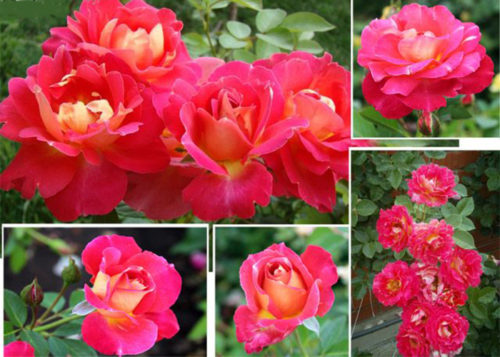

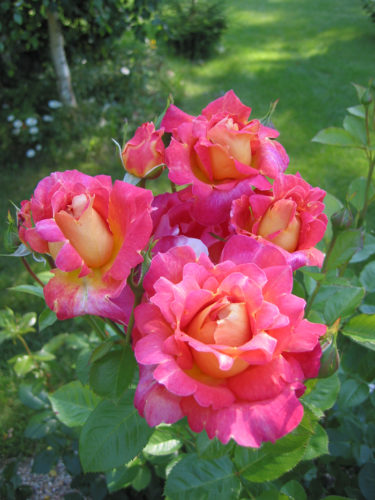
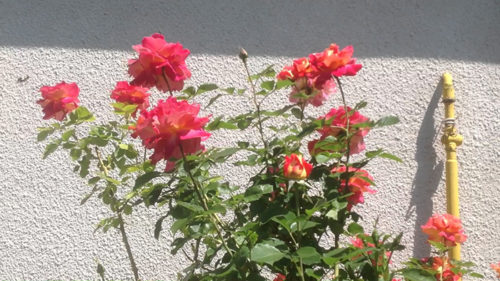

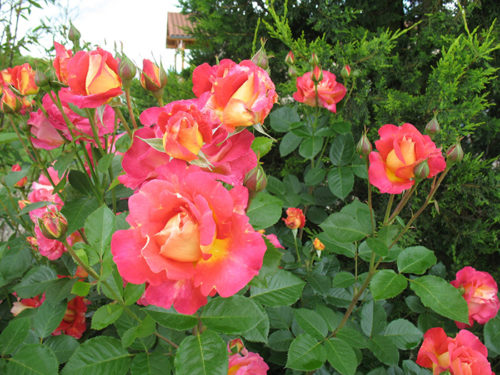
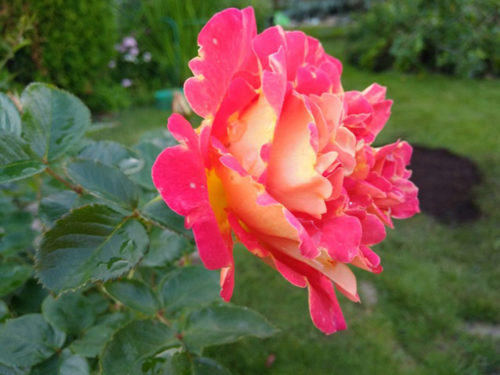
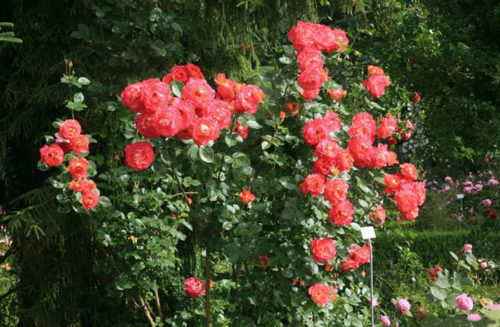


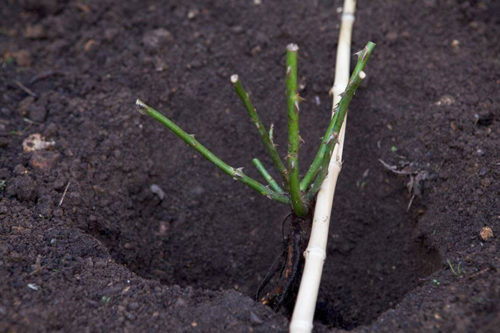

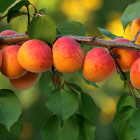


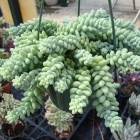
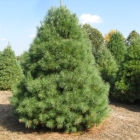

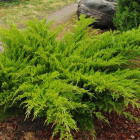

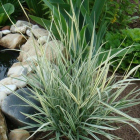
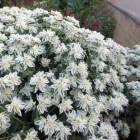
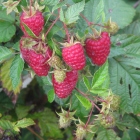

 Start a discussion ...
Start a discussion ...